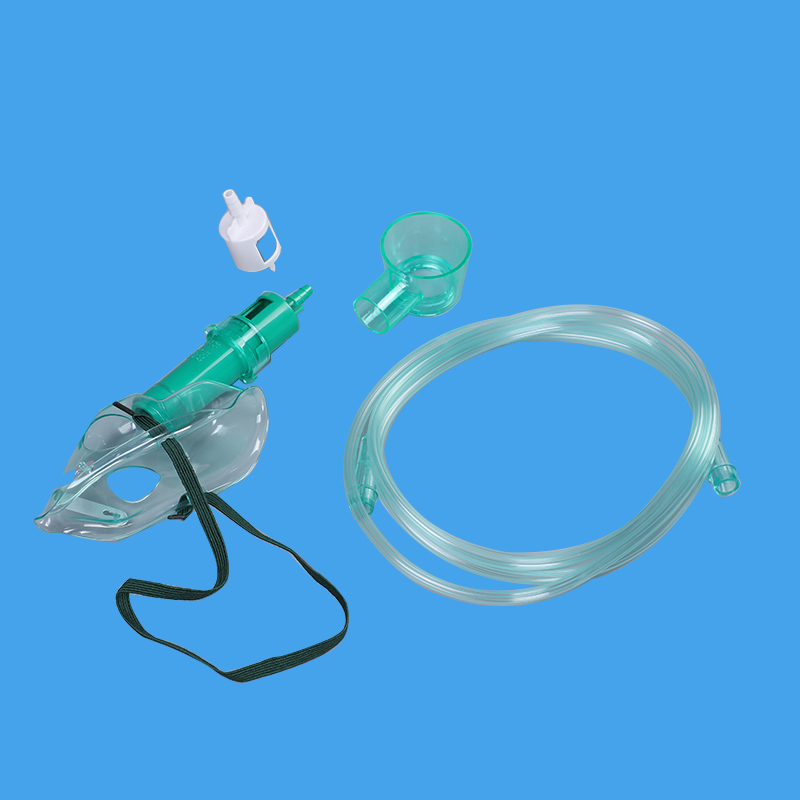-



How Do Different Venturi Masks Compare in Terms of Performance?
Views: 0 Author: Site Editor Publish Time: 2024-10-28 Origin: Site

Venturi masks, used in respiratory therapy, are crucial for delivering precise oxygen concentrations to patients with respiratory distress. Their performance can vary based on several factors, including design, flow rate, and the presence of additional features. Understanding these differences is essential for healthcare professionals to select the most appropriate mask for their patients.
Overview of Venturi Masks
Venturi masks are designed to deliver a specific concentration of oxygen to patients with respiratory issues. They are particularly useful in situations where precise control of oxygen is necessary, such as in patients with COPD or those requiring mechanical ventilation support.
These masks operate on the principle of the Venturi effect, where a high-velocity flow of gas is passed through a constricted area, resulting in a decrease in pressure and an increase in gas velocity. This principle is used to entrain a specific percentage of room air, which is then mixed with the oxygen supplied through the mask.
The masks are available in various designs, each with its unique features and benefits. Some common types of Venturi masks include the standard Venturi mask, the high-flow Venturi mask, and the adjustable Venturi mask. Each type varies in its design and the oxygen concentration it delivers.
In addition to these types, some Venturi masks come with additional features such as humidification capabilities, which can be beneficial for patients who require long-term oxygen therapy. These masks can help prevent dry throat and irritation, providing a more comfortable experience for the patient.
The choice of Venturi mask depends on the specific needs of the patient and the clinical situation. Healthcare professionals must consider factors such as the required oxygen concentration, the presence of additional features, and the patient’s comfort when selecting the appropriate mask.
Factors Affecting Performance
The performance of Venturi masks is influenced by several factors, including the design of the mask, the flow rate of the oxygen, and the presence of additional features. Each of these factors plays a crucial role in determining how effectively the mask delivers oxygen to the patient.
Design of the Mask
The design of the Venturi mask significantly impacts its performance. Masks are typically made from materials like plastic or silicone, which are chosen for their durability and comfort. The shape of the mask also plays a crucial role in ensuring a proper fit on the patient’s face, which is essential for effective oxygen delivery.
Some masks are designed with specific features to enhance their performance. For instance, masks with adjustable straps allow for a more secure fit, reducing the risk of air leaks and ensuring that the oxygen is delivered at the intended concentration. Additionally, the size and shape of the mask can affect the distribution of oxygen, with well-designed masks ensuring an even flow of oxygen across the face.
Flow Rate
The flow rate of oxygen through the mask is another critical factor affecting its performance. Venturi masks are designed to deliver oxygen at specific flow rates, which correspond to different oxygen concentrations. For example, a mask with a flow rate of 4 liters per minute (L/min) might deliver an oxygen concentration of 50%, while a mask with a flow rate of 8 L/min could deliver 100% oxygen.
The flow rate is adjusted by changing the size of the opening in the mask, which can be done using different color-coded adapters. It’s essential to select the correct flow rate to ensure that the patient receives the appropriate oxygen concentration for their condition.
Additional Features
Some Venturi masks come with additional features that can enhance their performance. One such feature is the incorporation of a reservoir bag, which can help maintain a consistent oxygen concentration during periods of low flow. This is particularly useful in situations where the patient’s breathing is irregular.
Humidification is another feature that can be beneficial for patients requiring long-term oxygen therapy. Masks with built-in humidifiers can help prevent dryness and irritation of the throat, providing a more comfortable experience for the patient.
Adjustable Venturi masks are also available, allowing healthcare professionals to fine-tune the oxygen delivery based on the patient’s needs. These masks often come with multiple color-coded adapters, each designed to deliver a specific flow rate and, consequently, a specific oxygen concentration.
Comparative Analysis of Venturi Masks
The comparative analysis of Venturi masks involves examining the differences in design, flow rate, and additional features among various types of masks. This analysis helps in understanding which mask is most suitable for specific clinical scenarios and patient needs.
Standard Venturi Masks
Standard Venturi masks are the most commonly used type in clinical settings. They are designed to deliver a specific concentration of oxygen based on the flow rate set by the healthcare provider. These masks come with color-coded adapters, each corresponding to a different flow rate and oxygen concentration.
The design of standard Venturi masks is straightforward, with a simple mechanism that allows for easy adjustment of the flow rate. However, one limitation is that they do not have additional features like humidification or reservoir bags, which can be a drawback in certain clinical situations.
High-Flow Venturi Masks
High-flow Venturi masks are designed to deliver a higher flow rate of oxygen, which is beneficial for patients who require a significant amount of oxygen. These masks are equipped with larger openings that allow for greater oxygen flow.
The primary benefit of high-flow Venturi masks is their ability to provide a higher concentration of oxygen, which is crucial for patients with severe respiratory distress. However, the larger size of these masks can sometimes make them less comfortable for patients who are on long-term oxygen therapy.
Adjustable Venturi Masks
Adjustable Venturi masks offer the most flexibility in terms of oxygen delivery. These masks come with multiple color-coded adapters, allowing healthcare providers to fine-tune the oxygen concentration based on the patient’s needs.
The ability to adjust the flow rate and, consequently, the oxygen concentration makes adjustable Venturi masks ideal for patients whose condition may change frequently. However, the complexity of these masks can sometimes lead to errors in adjustment, which requires careful monitoring by healthcare professionals.
Clinical Implications
The choice of Venturi mask can have significant clinical implications for patient care. Selecting the appropriate mask depends on several factors, including the patient’s condition, the required oxygen concentration, and the presence of additional features that may be beneficial.
In clinical practice, healthcare professionals must carefully assess the patient’s needs and choose a mask that will provide the most effective oxygen delivery. For instance, patients with severe respiratory distress may require high-flow Venturi masks, while those with less severe conditions might be adequately managed with standard masks.
Additionally, the availability of adjustable Venturi masks can be crucial in situations where the patient’s condition is fluctuating, as these masks allow for quick adjustments in oxygen delivery.
It’s also important to consider the comfort of the patient when choosing a mask. Masks that are too large or poorly fitting can lead to air leaks, which can compromise oxygen delivery and cause discomfort to the patient.
In conclusion, the comparison of different Venturi masks highlights the importance of selecting the right mask based on the patient’s needs. The design, flow rate, and additional features of the mask all play a crucial role in its performance and, ultimately, in the patient’s care. Healthcare professionals must be knowledgeable about these factors to make informed decisions that ensure the best possible outcomes for their patients.
Related Products
CONTACT US
NO.176, Gaoxin 5th Road, High-tech Industrial Park, Rizhao City276800, Shandong Province, China +86-13396234532 +86-13396234532Copyright © 2023 ZhenFu Group All Rights Reserved. Technology By leadong.com | Sitemap | Privacy Policy
























